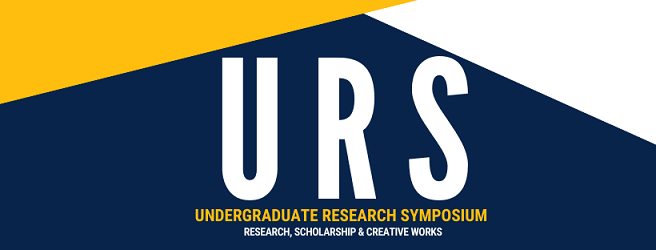Curcumin: An Agent to Fight Sepsis
Faculty Sponsor
Eike Bauer
Final Abstract for URS Program
Turmeric has been historically known to have medicinal capabilities1. It has properties which have proven to be useful in Ayurvedic medicine and have been historically used to treat ailment in Chinese and Indian cultures. Curcumin, which is an active ingredient of turmeric has proven to have anti-inflammatory2, anti-oxidant3, anti-fungal4, anti-viral5 properties, but cannot be directly used because of its poor bioavailability, insolubility, and instability in the human body.6 Therefore, by modifying the structure of the curcumin by attaching carbohydrates, changing the functional groups on the aromatic ring, or attaching substituents on the carbon located in between ketone and hydroxyl group I hope to achieve an increased level of solubility and stability in the modified curcumin derivative. 7 Previously, we performed glycosylation reactions by utilizing ferrocenium salts as promoters. I started synthesizing carbohydrates and also curcumin derivatives. I performed various glycosylation reactions with sugars and various primary and secondary alcohols. After getting a sufficient yield through NMR data I will now use the same technique to attach carbohydrates onto a curcumin molecule. Now the aim is to perform glycosylation reactions in between carbohydrates and hydroxyl functionality on the aromatic ring of curcumin.7 The ultimate goal is to use the curcumin derivatives to fight inflammatory diseases such as sepsis.8
References:
- S. C. Gupta; B. Sung; J. H. Kim; S. Prasad; S. Li; B. B. Aggarwal, “Multitargeting by turmeric, the golden spice: From kitchen to clinic,” Molecular Nutrition & Food Research, 2013, 57 1510-1528.
- N. Chainani-Wu, “Safety, and anti-inflammatory activity of curcumin: a component of turmeric,” The Journal of Alternative and Complementary Medicine, 2003, 9, 161-168.
- A. Apisariyakul; N. Vanittanakom; D. Buddhasukh, “Antifungal activity of turmeric oil extracted from curcuma longa,” Journal of Ethnopharmacology, 1995, 49, 163-169.
- S. Z. Moghadamtousi; H. A. Kadir; P. Hassandarvish; H. Tajik; S. Abubakar; K. Zandi, “A review on anibacterial, antiviral, and antifungal activity of curcumin,” BioMedical Research International, 2014, 2014, 1-12.
- A. Karimi; R. Ghodsi; F. Kooshki; M. Karimi; V. Asghariazar; A. T. Esfanjani, “Therapeutic effects of curcumin on sepsis and mechanisms of action: A systematic review of preclinical studies,” Phytotherapy Research, 2019, 33, 2798-2820.
- A. K. Choudhury; S. Raja; S. Mahapatra; K. Nagabhushanam; M. Majeed, “Synthesis, and evaluation of the antioxidant capacity of curcumin glucuronides, the major curcumin metabolities,” Antioxidants, 2015, 4, 750-767.
- I. Chattopadhyay; K. Biswas; U. Bandyopadhyay; R. K. Banerjee, “Turmeric, and curcumin: Biological actions and medicinal applications,” Current Science, 2004, 87, 44-53.
- D. Berg; H. Gerlach, “Recent advances in understanding and managing sepsis,” F1000Research,2018, 7, 1-8.
Document Type
Presentation

